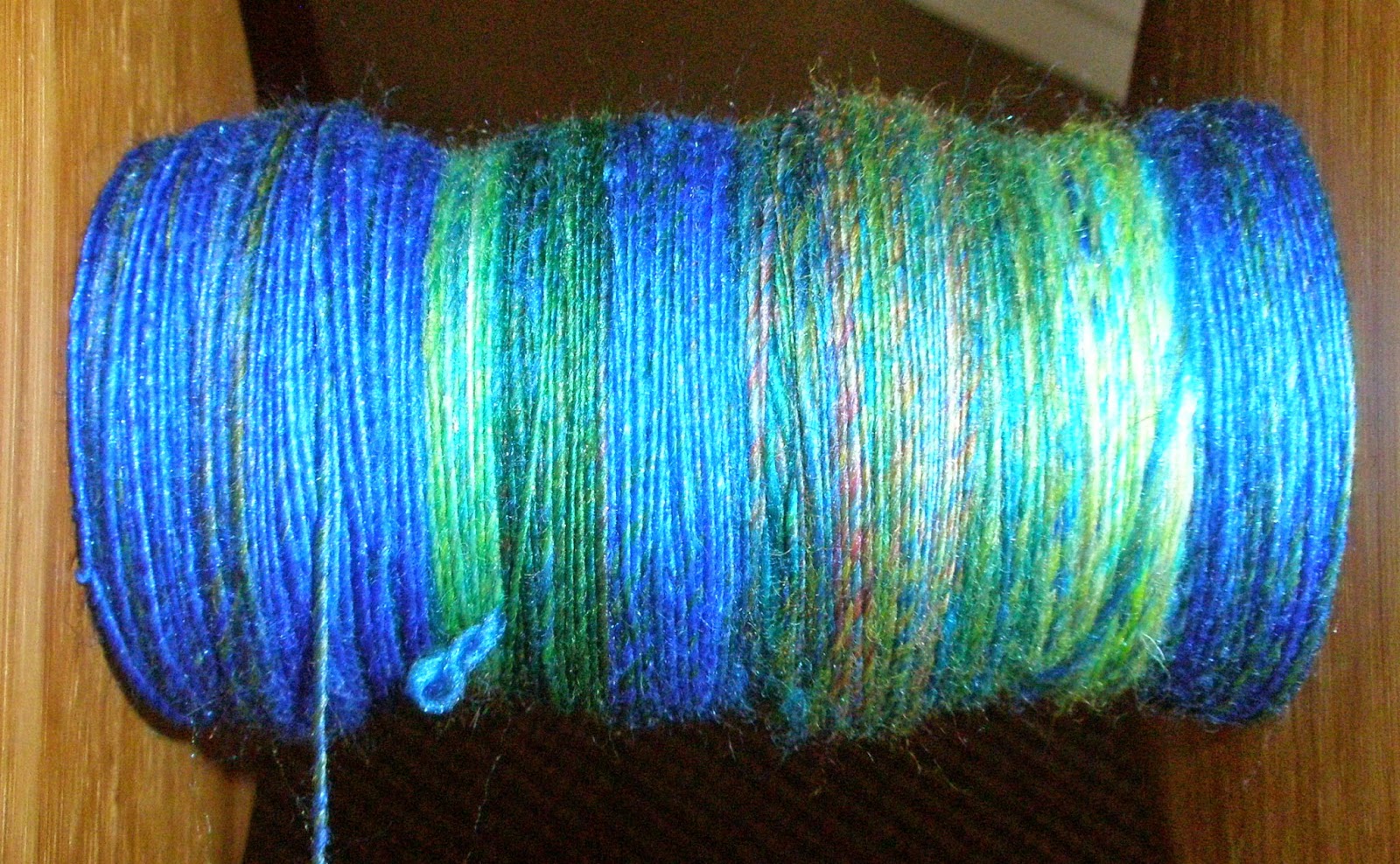I love the effects of the colour changes in Noro yarn and decided to try to dye and spin a yarn that also had long colour changes. One of my hands was severely out of action for months after I'd stupidly flick carded alpaca for a day. However I could still dye using my left hand. I hand painted metre after metre of merino and occasionally merino and silk and dyed using a microwave. It was exciting and also frustrating. I couldn't get a red red.
 |
| A handpainted length of merino |
|
Then I separated out the colours in the skeins.
While I was on a weekend fibre retreat I carded the lot into batts. Then I admired them for the next 4 months. At the same time I was dreaming up idea after idea for using them.

Spinning sequence: left from middle of picture
bright cherry
deep mushroom
pale mauve
deep mauve
rose
dark cherry
scarlet
orange
gold-brown
light green
mid green
red
The initial problem was how to spin the yarn. The obvious solution was to chain (Navaho) ply as the colours would easily form a sequence. However I wanted a light garment and chain plying gives a triple ply that is heavier than a two ply. The obvious answer was to spin the merino finer but fine yarns are not my forte. What about fulling a single? My experiment looked beautiful but I couldn't face fulling hundreds of metres of yarn. I could see tangles, snarls and disaster. After experiments with different techniques and whorl sizes I chose to spin the batts on my Majacraft Aura with the 7.3 whorl then ply.
The batts in total weighed about 450g. I decided to make 6 units. I had widely differing amounts of the various colours. There was 56g of pale green but only 17g of mushroom. I got out the scales and divided each colour into six. Five of them I put away in a box then I split my first unit of 16 colours into two for the 2 singles I would ply. But wait, there is more. I didn't want abrupt colour changes so I took a little of one colour and carded it with a little of the next colour to give a colour bridge from one to the next. But now it was getting very difficult to keep the weights the same for each ply. My scales don't really differentiate between 1, 2 and 3 grams. On Trademe I found scales that would measure in 0.01g so I ordered some.
I dizzed then plyed the singles and I'm happy with the colours. There were only 4 spots where I had to take out a metre or so because the colours weren't working. Here's the first skein done using my old scales.



















